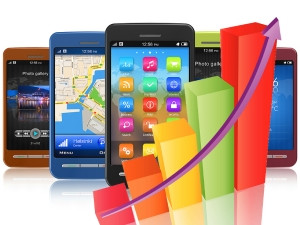
Apple is the latest company to enter the phablet fray and, while the tech giant is far from first to the table with a smartphone-come-tablet type of device, it may have entered the market at just the right time, with analysts predicting the imminent rise of phablets.
The International Data Corporation (IDC) says the future will be fuelled by phablets. According to new data from the firm's Worldwide Quarterly Smart Connected Device Tracker, worldwide phablet shipments will reach 175 million units worldwide in 2014, passing the 170 million portable PCs expected to ship during the same period. "Next year, total phablet volumes will top 318 million units, surpassing the 233 million tablets forecast to ship in 2015."
The IDC classifies phablets as smartphones with screen sizes from 5.5- to under 7-inches, although some industry players consider anything above the five-inch market to fit into the relatively newly-created device category. Samsung is widely believed to be the phablet pioneer, having introduced the 5.3-inch Galaxy Note in 2011, although HTC may have preceded the company with the release of its 5-inch Advantage X7500 in 2007.
Phablet sales first started gaining momentum in 2012, says the IDC, placing pressure on the tablet market. "IDC expects more consumers to shift back toward larger-sized tablets with their next purchase. However, that trend hasn't made up for the decreased shipments of smaller sizes, which has resulted in lower overall expectations for the tablet market in 2014 and beyond."
Tom Mainelli, programme vice-president with IDC's devices and displays unit, says mobile computing is clearly a space where consumers are still trying to figure out what mix of devices and screen sizes will suit them best. "What works well today could very well shift tomorrow as phones gain larger screens, tablets become more powerful replacements for PCs, and even smartwatch screens join the fray."
To make the phablet (as opposed to smartphone) user case more compelling, some smartphone makers have tried to get around the fact that using a phablet with one hand can be difficult, for example by implementing software to make one-hand typing easier. Samsung's One-handed Operation Mode shifts the keyboard and certain navigation keys to either the left or the right side of the screen, while Apple's Reachability feature moves the screen down.
Price point
Ovum analyst Richard Hurst says, while the industry can expect strong growth in phablets, "the gut feel is that we are likely to continue to see stronger growth in the smartphone and lower cost smartphone devices".
Analysts suggest a barrier to entry on the local front at this point may be the higher cost factor, inherent in larger screen phones - although the movement that has been seen in the low-cost smartphone market is expected to be mirrored in the phablet market in due course.
BMI-TechKnowledge (BMI-T) analyst Clinton Jacobs says the next six months will bring more to light. "Perhaps [there will be strong take up of phablets] at the high end of the market, but I'm not seeing too many of them around yet. At the low end of the market, cost is always a big factor. There will be low-cost phablet offers if the form factor takes off in a big way."
ICT veteran Adrian Schofield says a push for lower-cost big screen smartphones is inevitable. "It is logical that the manufacturers will chase the market downwards - it has always been thus. In the same way as there is a Mercedes A-class and a BMW 1-series."
BMI-T director Brian Neilson says the drop in tablet prices the industry has seen is telling. "Perhaps the Chinese manufacturers will fill this niche - low-cost phablets."
Meanwhile, a Reuters report suggests the new plus-size iPhone has already proven to be a big hit with US consumers. "Customers may have to wait three to four weeks to get their hands on Apple's iPhone 6 Plus, after a record number of orders for the company's latest smartphones strained available supply."
The iPhone 6 officially goes on sale in the US on Friday, while the online order portal opened up last week. According to Apple's Web site, there is a waiting period of up to a month for the iPhone 6 Plus, while the 4.7-inch iPhone 6 is available for delivery on 19 September.
With a 5.5-inch display, the iPhone 6 Plus' screen provides 88% more viewing area than its predecessor, the iPhone 5S. The phablet also features optical image stabilisation, and better battery life than its smaller siblings.
Share